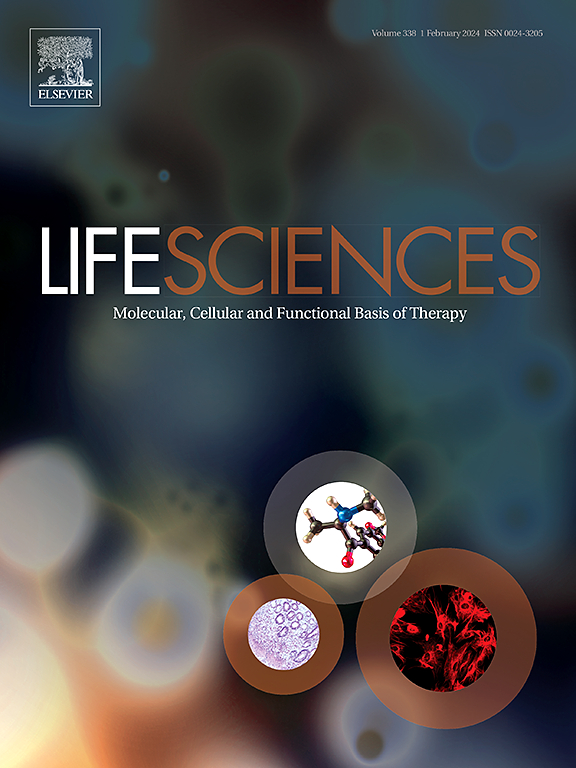子宫肌瘤中的黄体酮信号:分子机制和治疗机会。
IF 5.2
2区 医学
Q1 MEDICINE, RESEARCH & EXPERIMENTAL
引用次数: 0
摘要
黄体酮(P4)是一种重要的女性性激素,参与多种生理过程,包括维持子宫内膜、乳腺发育和骨骼健康。除了生殖功能外,P4还与激素依赖性疾病如子宫肌瘤的发病机制有关,子宫肌瘤是女性中最常见的良性肿瘤,可严重影响生活质量和生育能力。传统上,雌激素被认为是肌瘤生长的主要驱动因素,但最近的研究强调了P4在肌瘤生长中的重要作用。P4与孕激素受体(PRs)和非基因组膜受体(mPRs和PGRMCs)相互作用,激活促进肿瘤生长和生存的信号通路。P4促进血管改变,改善肌瘤的血液供应,并改变细胞外基质,这是肌瘤结构的关键组成部分。这一认识导致了选择性孕激素受体调节剂(SPRMs)作为子宫肌瘤潜在治疗方法的研究。临床试验已经证明,米非司酮、阿索普利尼和醋酸乌普利司等sprm在减少肌瘤大小和症状方面是有效的,尽管对安全性的担忧,特别是长期使用,仍然存在。较新的sprm,如vilaprisan,显示出希望,但需要进一步的研究来评估长期安全性和有效性。本文讨论了孕酮促进子宫肌瘤生长的机制,并探讨了SPRMs作为子宫肌瘤潜在治疗方法的临床有效性。本文章由计算机程序翻译,如有差异,请以英文原文为准。

Progesterone signaling in uterine fibroids: Molecular mechanisms and therapeutic opportunities
Progesterone (P4) is a vital female sex hormone involved in various physiological processes, including the maintenance of the endometrium, mammary gland development, and bone health. Beyond its reproductive roles, P4 is implicated in the pathogenesis of hormone-dependent conditions like uterine fibroids, the most common benign tumors in women, which can severely affect quality of life and fertility. Traditionally, estrogen was considered the primary driver of fibroid growth, but recent research highlights the significant role of P4 in fibroid growth. P4 interacts with progesterone receptors (PRs) and non-genomic membrane receptors (mPRs and PGRMCs) to activate signaling pathways that enhance tumor growth and survival. P4 promotes vascular changes that improve the blood supply to fibroids and modifies the extracellular matrix, a key component of fibroid structure. This understanding has led to the investigation of selective progesterone receptor modulators (SPRMs) as potential therapies for fibroids. Clinical trials have demonstrated the effectiveness of SPRMs like mifepristone, asoprisnil, and ulipristal acetate in reducing fibroid size and symptoms, though concerns about safety, particularly with long-term use, remain. Newer SPRMs, such as vilaprisan, show promise, but further research is necessary to assess the long-term safety and effectiveness. This review discusses the mechanisms by which progesterone contributes to fibroid growth and examines clinical effectiveness of SPRMs as potential treatments for uterine fibroids.
求助全文
通过发布文献求助,成功后即可免费获取论文全文。
去求助
来源期刊

Life sciences
医学-药学
CiteScore
12.20
自引率
1.60%
发文量
841
审稿时长
6 months
期刊介绍:
Life Sciences is an international journal publishing articles that emphasize the molecular, cellular, and functional basis of therapy. The journal emphasizes the understanding of mechanism that is relevant to all aspects of human disease and translation to patients. All articles are rigorously reviewed.
The Journal favors publication of full-length papers where modern scientific technologies are used to explain molecular, cellular and physiological mechanisms. Articles that merely report observations are rarely accepted. Recommendations from the Declaration of Helsinki or NIH guidelines for care and use of laboratory animals must be adhered to. Articles should be written at a level accessible to readers who are non-specialists in the topic of the article themselves, but who are interested in the research. The Journal welcomes reviews on topics of wide interest to investigators in the life sciences. We particularly encourage submission of brief, focused reviews containing high-quality artwork and require the use of mechanistic summary diagrams.
 求助内容:
求助内容: 应助结果提醒方式:
应助结果提醒方式:


